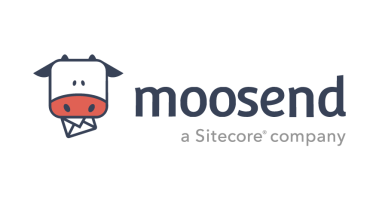
Data is fast becoming the lifeblood of every business decision. According to Canva’s new report, Beyond the Numbers, 74% of professionals say their organisation’s dependence on data insights has increased over the past two years.
What was once the sole domain of analysts is now everyone’s responsibility, with even creative and sales teams expected to use data effectively. It’s no surprise, then, that 89% of professionals now work with data or spreadsheets every week.
And while data use is everywhere, confidence using it most certainly isn’t. So what is holding people back? And how can organisations empower professionals of all backgrounds to use data well?
Mythbusting data storytelling
Strong data storytelling is more than just sharing numbers. When backed by reliable data, it becomes a powerful way to build trust with your audience. In fact, 88% of professionals say that clear data visualisations increase their credibility when they have confidence in the data source.
But having good data isn’t enough on its own, according to Brielle Butler, Canva’s group product lead for data visualisation. To really build credibility, the data needs to be presented in the right way, and it needs to be consistent. “When your visualisations consistently reflect your brand elements, you’re creating these visual shortcuts that help decision-makers instantly recognise and trust what they’re seeing,” says Butler.
The data backs this up: 84% of marketing professionals and 82% of sales professionals say they feel more confident presenting when their data is visually compelling. “That confidence is contagious,” adds Butler. “It translates directly into better engagement and clearer communication with stakeholders. You’re essentially cutting through all the noise that’s constantly competing for attention in today’s business environment.”
Strong data storytelling is more than just sharing numbers
The power of data visualisations shouldn’t be underestimated. According to an academic study by MIT, the human brain processes visuals 60,000 times faster than text – the equivalent of travelling to the moon in four seconds instead of three days. This shows that good data visuals don’t just look nice; they also make information stick, speed up understanding and help audiences process insights more clearly.
Yet even though 87% of sales and 88% of marketing professionals recognise that data visualisations enhance credibility, 30% still struggle to create them. So while we know data is powerful, there’s a knowledge gap when it comes to making data compelling enough that people want to act on it. But if done right? Brielle calls it a strategic communication tool, not just a design exercise.
Data anxiety is still widespread
Despite the ability of data to build trust and credibility, two-thirds (66%) of professionals admit to feeling anxious when working with data. What’s more, 26% of sales and 35% of marketing professionals are actively avoiding data-related tasks altogether. “That’s a significant portion of the workforce running away from something that should be empowering them,” says Butler.
Unfortunately, these delays caused by people avoiding data-related tasks can have far-reaching consequences, and its organisations end up missing out on the benefits of quick decision-making that this data can provide. Butler says, “You’re essentially underutilising one of your most valuable assets – your data – because people are too stressed to engage with it effectively.”
And even when professionals claim to be confident, research shows there’s a gap between that confidence and real action. Only 44% of people who claim they are confident with data actually maintain that confidence when it comes time to start data-heavy tasks. “It’s like the difference between saying you can drive and actually getting behind the wheel in heavy traffic,” Butler observes. Closing the divide between confidence and action is where real progress begins.
Even non-specialists can unlock data’s value
Fortunately, you don’t need to be a data scientist to turn your data into real impact. As visual communication becomes more essential, data storytelling tools are becoming easier for everyone to use. Still, 44% of professionals say they struggle to switch between different data tools.
Platforms like Canva help non-specialists overcome ‘data dread’ by taking the guesswork out of working with data. Canva’s mission is to make it easier for teams to spot patterns, highlight trends and share clear insights. What’s more, it’s already trusted by major global brands.
“Canva has reimagined what a spreadsheet can do and with Canva Sheets, users can combine data and design to create content like never before,” says Butler. “Instead of expecting everyone to become data scientists, we are building integrated workflows that connect data sources directly to brand standards. This eliminates a lot of the friction that typically makes people give up before they even start.”
For example, Reddit used Canva Enterprise to store all its approved brand assets, imagery and templates in one place. This gave teams across the organisation an easy way to keep their content on-brand without flooding the design team with requests. With Canva’s drag-and-drop tools and centralised asset library, employees could quickly access what they needed. Canva also helped Reddit streamline communication by giving teams a simple template to share updates with moderators. Within six months, Reddit saved 21,000 design hours using Canva Enterprise.
AI is transforming data storytelling
AI has touched every industry, and it’s changed the way specialists and non-technical team members work. Research shows that 76% of sales and 79% of marketing professionals believe AI can improve their data abilities.
It is confidence, not just competence, that shapes data storytelling
This growing confidence reflects how AI is no longer seen as just a tool for technical experts. Rather, it’s becoming an everyday assistant that empowers anyone to work with data more effectively. By making complex tasks simpler, AI helps more people turn raw information into clear insights. 76% of professionals believe AI can help remove technical barriers, specifically through automation of repetitive tasks (56%), data cleaning and preparation (48%) and data visualisation recommendations (46%).
To close the divide between uncovering insights and turning them into compelling visualisations, Canva has integrated AI into Canva Sheets. Employees can use it to write formulas, recommend impactful visualisations and surface hidden insights. This means they can spend less time on complex tasks like data analysis, and more time using their creativity to tell stories and think strategically. “It’s like having a really sophisticated translator that doesn’t just convert the language, but ensures the message resonates with the audience,” Butler notes.
Culture and leadership make the difference
According to Emma Robinson, Canva’s B2B marketing lead, organisational culture and leadership present the biggest opportunity, and also the biggest challenge, to data confidence. Robinson says this disconnect between knowing how to use data and actually using it shows that training alone won’t fix the issue. “There needs to be a cultural transformation.”
Instead, Robinson believes the solution is for leaders to move away from treating data storytelling as a nice-to-have skill, and to instead treat it as a core competency. “The organisations that are succeeding are creating environments where insights don’t get buried in spreadsheets or lost in translation between departments. They’re building cultures where every team member feels confident contributing insights,” says Robinson.
There’s evidence that this appetite for change exists, given that 85% of people say they are willing to adopt tools that make data visualisation easier. However, to make it a reality, leaders should identify specific growth areas by implementing skills assessments for employees. This provides an opportunity to create targeted learning paths. According to Robinson, “That’s when you start seeing real cultural transformation rather than just tops-down mandates. It’s about valuing clear communication equally with analytical rigor.”
In the end, it is confidence, not just competence, that shapes data storytelling outcomes. When leaders treat clear, compelling communication as essential instead of an optional nice-to-have, they empower their teams to turn insights into action. By fostering a culture where people feel equipped and encouraged to share what the data really means, organisations can build trust and drive better decisions at every level.
How to design your way to data confidence
For marketers and creatives looking to sharpen their storytelling impact, the key is to take your existing skills and apply them to data storytelling. Here are some practical tips to become confident by design:
Instead of trying to rebuild everything from the ground up, start with a simple task. “Take one monthly report that stakeholders typically ignore and redesign it using basic visual storytelling principles. Spend five minutes browsing Canva data visualisation templates for inspiration, then transform a dense spreadsheet into a one-page dashboard highlighting your three biggest insights,” Butler says.
Robinson describes brand consistency as a “low hanging fruit.” It’s relatively simple to achieve, and it can deliver meaningful benefits without requiring huge effort or resources. It can be something as simple as assigning specific colours to different data types, such as primary colours for main metrics and secondary colours for comparisons. It’s easy to implement, but it can make a huge difference in how professional and polished the final product looks.
Adding a ‘key takeaway’ caption in your chart is helpful for your audience, but even more importantly, it forces you to consider why anyone should care about what you’re showing, which is a fundamental part of good storytelling. The caption can be something as simple as ‘This matters because…’
Remember, the goal isn’t to create new technical hurdles for yourself; it’s to remove barriers that cause inaction. Focus on small, practical steps you can repeat with confidence. Over time, these habits will sharpen your storytelling instincts, build trust with your audience and help you turn data into stories that actually drive action.
Ready to be a confident data communicator? Explore Canva’s Beyond the Numbers report to discover how marketers and creatives are unlocking the power of visual storytelling.

Data is fast becoming the lifeblood of every business decision. According to Canva’s new report, Beyond the Numbers, 74% of professionals say their organisation’s dependence on data insights has increased over the past two years.
What was once the sole domain of analysts is now everyone’s responsibility, with even creative and sales teams expected to use data effectively. It’s no surprise, then, that 89% of professionals now work with data or spreadsheets every week.
And while data use is everywhere, confidence using it most certainly isn’t. So what is holding people back? And how can organisations empower professionals of all backgrounds to use data well?






